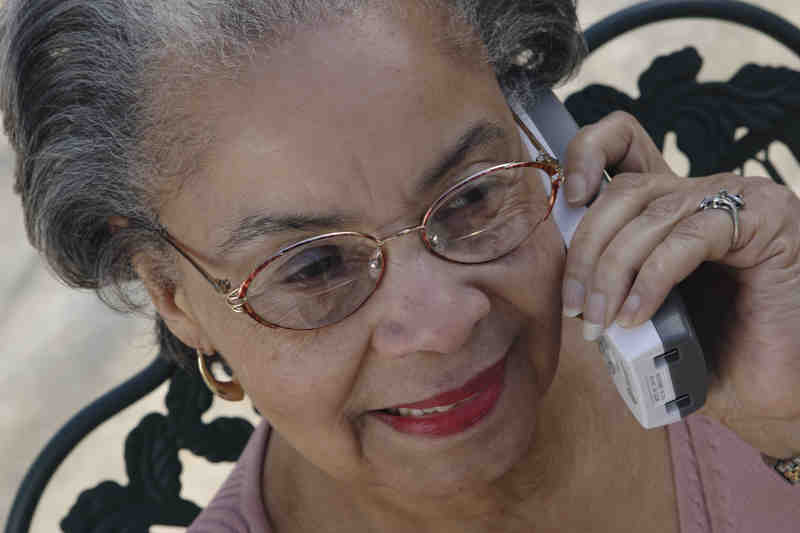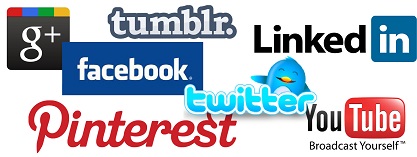Starting and Managing A CIS

Your first step is to decide on the most appropriate channels of communication for clients to contact you.
Jump to:
-
-
- Core Elements of an Interaction
- Specific Principles for Telephone Services
- E-mail and Letters
- Instant Messaging/1-2-1 online chat
- In-Person Services
- Social Media
Traditionally the telephone has been the most common way that CIS services have been offered. But since the first CIS were started, communications channels have increased with the growth of mobile phone technology, personal computers, smart phones and tablets.
When deciding which of these channels to use, think about the ones that your target audience is likely to have access to and want to use. You will need to balance this against the costs of using different channels both in equipment and staff time. For example, if the majority of your population use mobile (cell) phones rather than traditional landline phones, you will need to ensure that the technology you have available is compatible and inexpensive when receiving calls from these devices. Text based interactions (email and online chat) generally take longer than telephone inquiries and so therefore are more expensive in terms of staff time. Text based channels also require staff to have good written communication and typing skills. Each of these elements needs to be balanced before deciding which channel you are going to use.
Core elements of an interaction
Cancer Information Services have been established in many countries. Each is a unique service, but all have a set of common core guidelines (often called a mission statement) for answering inquiries. These core guidelines may include:
-
-
-
-
- use plain language
- structure reply logically
- address one subject at a time
- be concise
- acknowledge emotional issues
- explain medical terms and avoid jargon
- acknowledge uncertainty
- answer all questions that are asked
- tailor the reply to the individual needs of the inquirer
- identify other good sources of information and support and know when it is appropriate to direct inquirers to them
- fully document inquiries
- use disclaimers and be clear about the boundaries of the service
- send approved information resources
-
-
-
Specific Principles for Telephone Services
-
-
-
-
- use a standard greeting
- use exploratory questions, listening skills and information gathering to assess need
- check for understanding
- close call by summarizing information
-
-
-
Toolbox!
See our map of The Process of a Call in the CIS Toolbox to see one example of a call from start to finish.Email and Letters

One of the main challenges in answering email or letter inquiries is that the information you are given is often limited. Unlike a telephone conversation or instant messaging, e-mail provides no opportunity to ask questions of the person and assess their needs. Therefore, it’s important that the response acknowledge the question being asked. Answering inquiries in writing either by email or letter also takes much longer than having a telephone conversation.
Toolbox!
Check out how one CIS handles digital and written requests from clients in our Guide to Responding to Emailed and Written Enquiries in the CIS Toolbox.In some CIS offices, a form is posted online to collect standard information. In others, if there is not enough information, a return inquiry is sent asking for additional information. Such inquiries, depending on what information already has been received, ask for:
-
-
-
-
- where the cancer started (primary site)
- whether the cancer has spread and, if so, where (secondary sites)
- what treatment has already been given
- who is the person with cancer (you, family member/friend)
- where the person with cancer lives (to help find appropriate services in that area)
-
-
-
It’s useful to include disclaimers in email correspondence that describes the limits and boundaries of the service you offer.
Tip:
Have pre-prepared standard answers and phrases that can be copied and pasted into responses to common inquiries.Don’t forget you can include links to web pages in emails. Use these instead of rewriting or paraphrasing information that is already available on a website but always acknowledge the source when you link to another organizations material.
Instant Messaging/1-2-1 online chat

Instant messaging is a service that lets your information specialist have a private discussion with one person using real-time e-mail; that is, both people are on the internet at the same time. It’s similar to a telephone call but uses written words, sentences, and paragraphs rather than talking. Various organizations use different names for this service. For instance, the National Cancer Institute (NCI) calls it “Live Help” and has a special button on its web site to access the service.
There are pros and cons with instant messaging:
Pros
-
-
-
-
- it’s immediate
- it’s faster than regular e-mail
- it lets you offer better customer service than e-mail
- it can be used to help people find information on your web site
- it provides real-time, web-based chat with an information specialist
-
-
-
Cons
-
-
-
-
- it doesn’t have the human touch of a telephone conversation
- it’s an emerging technology still in development with many technological problems
- the transcript of the chat becomes an official document of your organization that should be treated as a letter of record
- you must closely monitor the quality of the response
- the information specialist needs training to conduct instant messaging
- supervisors need to use a different type of monitoring process
- it takes longer and is more expensive
-
-
-
Instant messaging requires special skills. Information specialists working with instant messaging must have abilities in web navigation, keyboarding, and computers. They must be able to extract information from a database. They need to understand instant messaging “shorthand” (similar to text messaging shorthand). Replies should be formatted in standard language, not in text mail language. Disclaimers are essential in giving information through this channel.
In-Person Services
Most CIS programs find that some people request services in person. Several CIS programs also have set up special models for in-person services, such as:
-
-
-
-
- offices for nurses in hospitals to give information to patients and their families
- mobile cancer information services that visit towns and villages, such as the mobile van program run by Macmillan Cancer Support.
- support programs for people with cancer, parents of children with cancer, and those who care for cancer patients, such as the Cancer Connect program run by Cancer Council Australia.
-
-
-
One of the major decisions that you will need to make when starting an in-person service is whether the service will give information or will offer counselling. Such programs require:
-
-
-
-
- private space
- access to resources
- staff with good interpersonal skills
- depending on the kind of service, increased counselling skills
-
-
-
Social Media

- Many people are using the term “social media,” and it means different things to different people. We will use the meaning from Wikipedia: “Social media are media for social interaction, using highly accessible and scalable communication techniques. The term refers to the use of Web-based and mobile technologies to turn communication into interactive dialogue.”1 Two things make social media different from other material on the Web: it involves two or more people and usually includes some form of talking. For this module, social media will include:
-
-
-
-
- Forums and message boards
- Chat rooms
- Blogs
- Social networking web sites
- Apps
-
-
-
Tip:
Be careful – with all that social media offers, there are some risks, such as in the areas of security and privacy. You need to look at both risks and benefits.Legal concerns
Before starting any social media service, think about possible legal issues. Get legal advice about the laws in your country. Study how others have set up policies that limit the control you have over the information being posted. Ask about what you need to put on your Web site to lessen your risk.
Privacy issues
Some social media sites may allow only people who register to look at what others have said and to add messages. Other sites can be read by anyone but only those who are registered can take part in discussions. Some sites may be open to all. It is important for a CIS setting up a social media service to make it clear to users who will be able to see their posts, and to remind them that they may not want to give out information that tells others who they are. You need to have a clear statement on your social media site about privacy. It’s good practice to have a section of your social media site that talks about terms and conditions and that asks users not to post personal details about themselves, but rather to use an alias or “nick name.” You’ll need to keep all personal details of your administrative system for the social media site stored securely in line with local data protection/privacy laws.
How will everything work together?
As you start thinking about adding social media to your communications program, you need to plan how it will fit in with your other programs. Think about:
-
-
-
-
- your main goals for using different social media channels
- what they will add, and
- what resources you will need to develop, moderate, and maintain your social media
-
-
-
It is especially helpful to add social media to your strategic plan, defining your objectives and purposes for using it and thinking through in advance how you will deal with various problems. It’s exciting to use new technology for cancer information and support, but only if it will add benefit to your program or your audiences. Social media will be only one part of a communication program for a CIS that could include information web sites, or telephone and e-mail services. In deciding if and how you are going to add social media to your CIS, you will need to think about:
-
-
-
-
- what social media adds to your present services
- whether your staff/volunteers will work on the new channels or if a new team will be needed
- how your present services will work with the new channels to provide a full service
- what resources—funding, staff, time—will be needed to run the new channel over time
- which new channels fit best within your service and which would be better suited to publicizing existing services
- how the new channels fit with your present ones, including formats and quality monitoring
- how to coordinate this new service across your organization
-
-
-
Which social media channel to use
Social media channels give us exciting new ways to engage and connect with people. Each channel has different strengths and weaknesses. You need to study them carefully. For example, understand the amount of text you can use on the channel and the people who use it. You may feel that 140 characters, when using Twitter, is not enough to answer complex medical questions, but that you could use this channel for getting people to know about your service. Social networking sites may not be the best place to talk about confidential medical problems, but they could be good for publicizing your organization and bringing new users to your services.
-
-